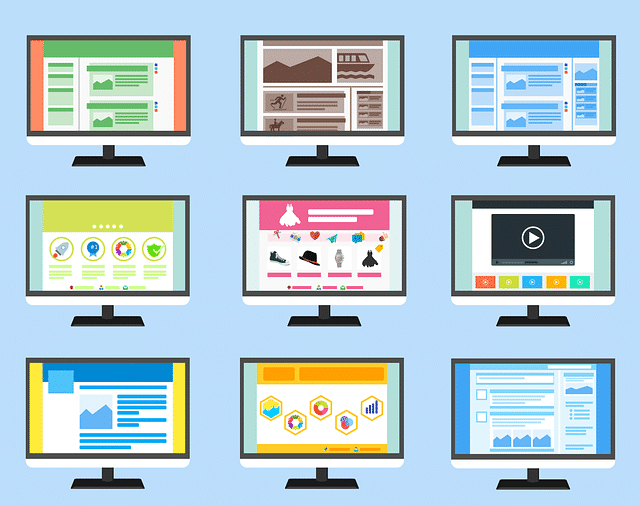SHARE
Why Your HubSpot Marketing Plan Should Include Growth Driven Design
Does this sound familiar? You purchased HubSpot because you were sold on all the benefits it has for your business.
But it’s been awhile and you aren’t seeing enough of a revenue increase, you’re frustrated with the types of leads your website attracts, you want better quality leads and a repeatable strategy for turning those leads into customers.
HubSpot is a fantastic tool for optimizing social media marketing, content management, analytics, and SEO, but it's also a beast of a software program. For that reason, you might assume your problem lies with the HubSpot tool, rather than elsewhere. But...
The Problem Might Not Be Your HubSpot Marketing Plan...
The problem might be your website.
If you’re already using HubSpot chances are you already understand some of the key points of inbound marketing, but just in case let’s go over how inbound makes a HubSpot marketing plan so effective. HubSpot marketing plans use:
-
Buyer Personas — those semi-fictional representations of your ideal customer based on market research and real data about your existing customers
-
Blogging for business — creating blogs to attract clients based on topic clusters using words and phrases searched for by your buyer personas
-
Social media — attract new leads through targeted social media posts and drive those leads to your website
-
Search Engine Optimization (SEO) - SEO improves website ranking to help your business’s website get found faster and by the right people
-
Email marketing — build brand recognition and engage existing clients while getting vital engagement stats to develop your SEO campaign for the long term
If you’re using HubSpot and your website is still underperforming, consider combining the above inbound strategies with a growth-driven design strategy to boost your sales engine needs.
What Is Growth Driven Design?
Growth Driven Design (GDD) is a new, iterative process based on continuous improvement (ie. new blog posts every month to keep the interest of your audience and inform them and social media posts continuously driving users back to your website). GDD combines inbound marketing techniques with a new, savvy web design strategy.
Traditional web design is risky because it costs your business a lot. Traditional web design, for a small- to medium-sized business (SMB), can cost between $30,000 to $80,000 upfront. An upfront cost like that is hard to budget for and is paid in full before you know what impact the website will have on your business. There are also large time and resource commitments because the average traditional SMB website takes about three months to complete, requiring during that time a lot of resources and energy from your team. And even if the cost and time are approved, there are so many steps involved in launching the site it’s difficult to accurately quote the cost, and often goes over budget and is not delivered on time.
Growth-Driven Design is Easier to Implement Than You Think
Growth-driven design has drastically changed website design because it minimizes the risks of traditional web design through continuous learning and improvement, and tightly integrates your marketing and sales teams. And GDD is easier to implement than you think because it’s a systematic approach to shorten the time to launch, focusing on real impact and continuous learning and improvement. Because it launches faster and holds less surprises, if any, GDD often costs much less to implement. With about $30,000 to budget for, you can have fewer unknowns and a lot more data to guide your business forward from the get go. GDD is constantly researching, testing and learning about visitors to your site, informing ongoing website improvements.Through these continuous improvements peak performance is attainable, and often for a lot less than a traditional web design launch, not only money-wise but time-wise as well. And if you need help you can also hire an inbound agency to guide you through the GDD process.
If your objective is to gather better quality leads and convert those leads through your website, you must conduct continuous analysis on the content of your website to optimize it for what your target audience wants/needs (which is something you’ll know from your buyer personas). GDD makes tracking leads and customers through a CRM, and creating an easy-to-implement repeatable web strategy, easier.
Growth Driven Design Creates a Repeatable Strategy For Website Sales Success
Download this E-book to discover the key principles of GDD and how to implement a GDD strategy to see HubSpot marketing success on your website.
References:
https://cdn2.hubspot.net/hubfs/124445/docs/ebook-growth.pdf?t=1488562926580
Topics
- Content Creation (297)
- Growth-Driven Design Websites (167)
- Inbound Marketing (145)
- Sales Growth (133)
- Tangible Words (111)
- Search Engine Optimization (85)
- Social Media Marketing (83)
- Hubspot (76)
- Blogging for Business (75)
- Economic Development (64)
- Events & Training (60)
- Company Growth Podcast (49)
- Manufacturing (47)
- Tourism (46)
- Email Marketing (42)
- Case Stories (40)
- Testimonials & Client Feedback (36)
- Education and SaaS (23)
- Google (21)
- Careers (19)
- Inbound Marketing Agency (19)
- Cool Companies (18)
- FAQ (16)
- Alysha Dominico (13)
- Associations (7)
- Food and Beverage (7)
TW Blog Sign-Up
Learn more about how to grow your business and improve your sales team process.








